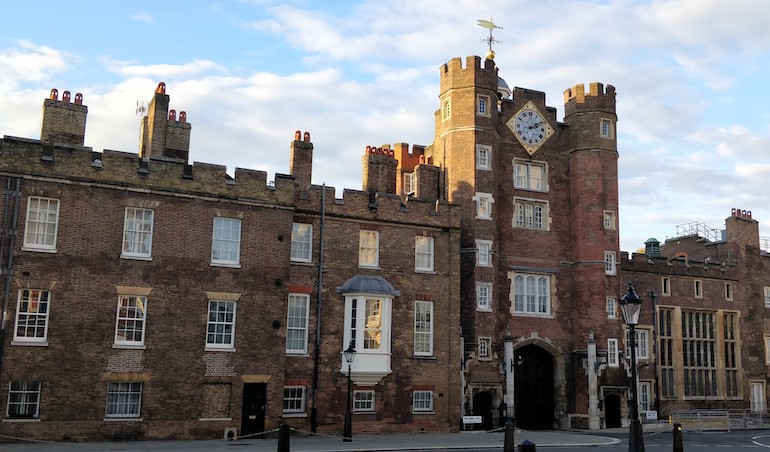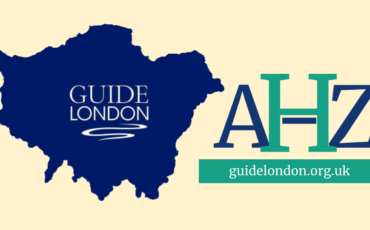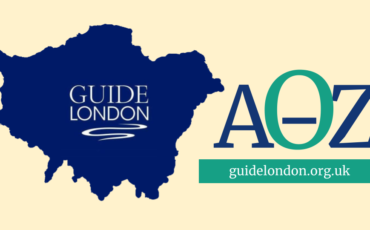How many London landmarks and tourist attractions can you name that start with the Letter J? Blue Badge Tourist Guide Mark King continues our Guide London A-Z video series and provides insights on the historical events, famous and not-so-famous landmarks in London starting with the Letter J.
London landmarks and tourist attractions that begin with the Letter J
This is the Guide London A-Z. I am Mark King, a London Blue Badge Tourist Guide and today let’s look at the letter ‘J’.
Dr. Samuel Johnson’s House
‘J’ is for Dr. Samuel Johnson, the 18th-century dictionary-compiler, writer, and wit, who famously said: “Sir, when a man is tired of London, he is tired of life; for there is in London all that life can afford.”
To discover more about Dr. Johnson’s life and times, head to one of his former homes in a little cobbled square tucked away off Fleet Street. In the square, you’ll also find a charming sculpture of his beloved pet cat, Hodge enjoying a tasty oyster.
 Dr Samuel Johnson’s House in London. Photo Credit: © Mark King.
Dr Samuel Johnson’s House in London. Photo Credit: © Mark King.
Jewish London – Bevis Marks Synagogue
Over its 2000-year existence, London has become home to an impressively diverse population. One of the longest-established is its Jewish community, our next ‘J’.
Nestling among modern skyscrapers, the three-hundred-year-old Bevis Marks synagogue’s historic interior hosts traditional services that are still lit in winter by flickering candlelight. First invited over in the 11th century from his lands in Normandy by the all-conquering new English King William I, Jewish merchants and financiers played an important role in England until 1290 and then again from the mid-17th century.
 Jewish London – Bevis Marks Synagogue. Photo Credit: © Mark King.
Jewish London – Bevis Marks Synagogue. Photo Credit: © Mark King.
Jewish Museum
With displays about the history and traditions of British Jews, the Jewish Museum celebrates the lives of individuals making their mark in fields as varied as medicine, broadcasting, sport, and popular music. It’s well worth a visit.
 The Jewish Museum London – Judaica Gallery. Photo Credit: © Benedict Johnson.
The Jewish Museum London – Judaica Gallery. Photo Credit: © Benedict Johnson.
Jamme Masjid
Nowhere else is there a building like our next ‘J’ – the Jamme Masjid. Near to London’s former docks along the river Thames, the East End has a unique heritage as a social melting pot that bears witness to several transformational waves of immigration. This building started out in the 1740s as a French Protestant church, then became a Jewish synagogue in the 19th century, and since the 1970s has been a Muslim house of prayer. The Jamme Masjid epitomises vibrant multicultural London, helping explain its development into the global cultural and commercial powerhouse we see today.
 Brick Lane Jamme Masjid. Photo Credit: © Lemur12 via Wikimedia Commons.
Brick Lane Jamme Masjid. Photo Credit: © Lemur12 via Wikimedia Commons.
Jellied Eels
The natural bounty of the Thames and the seas around Britain has kept Londoners fed. ‘J’ is for jellied eels that once provided a popular meal for ordinary Cockney families.
Eels are gutted and chopped, then boiled in a broth with herbs and cooled in their own gelatin. Give them a try – perhaps in a traditional pie-and-mash shop or look out for a jar on sale in specialist fish shops, delis, or online. By the way, connoisseurs say that a dash of vinegar and white pepper elevates the flavours.
London’s food and drink scene still offer a tempting variety of tasty delights, as befits the city that claims to have created the combination of fish and chips celebrated as Britain’s national dish.
 Bowl of jellied eels. Photo Credit: © Footballbooks via Wikimedia Commons.
Bowl of jellied eels. Photo Credit: © Footballbooks via Wikimedia Commons.
St James’s Palace
At the top end of the pecking order, hunting deer was a favourite pastime of royalty. King Henry VIII acquired land in Westminster that included a hospital dedicated to St James, our next ‘J’. Over the following five centuries Henry’s red-brick Tudor hunting lodge in his private deer park evolved into St James’s Palace. It was London’s principal royal residence for many years and even now retains its status as the official base of the royal court. The palace’s courtyard provides the backdrop for one element of the ever-popular Changing the Guard ceremony.
 St James’s Palace in London. Photo Credit: © Mark King.
St James’s Palace in London. Photo Credit: © Mark King.
St James’s Park
On the south side of the palace, St James’s Park extends towards the current principal royal residence – Buckingham Palace. Its 57 acres include a lake, trees, lawns, flowerbeds, and waterfowl that make this one of central London’s most enjoyable public parks. One of the more unexpected sights is a flock of pelicans first established 350 years ago!
On the north side of St James’s Palace, look out this gold-coloured coat of arms above the entrance to wine and spirit merchant, Justerini & Brooks. Called a ‘Royal Warrant’, it is displayed with understandable, if understated pride. This is because it shows that they are a trusted supplier to one of the three senior royal households – HM the Queen (as shown here), or the Prince of Wales, or, until his death in 2021, the Duke of Edinburgh. More than 800 businesses offering various products or services hold a Royal Warrant and many are based in the district close to the palaces.
Yes, as Dr. Johnson said, …’ there is in London all that life can afford.’ These are just some of the tourist attractions that begin with the letter ‘J’.
 Gold-coloured coat of arms above the entrance to wine and spirit merchant, Justerini & Brooks. Photo Credit: © Mark King.
Gold-coloured coat of arms above the entrance to wine and spirit merchant, Justerini & Brooks. Photo Credit: © Mark King.
My name is Mark King. Check out my profile at our website guidelondon.org.uk and please subscribe to our YouTube channel and join us as we explore the A-Z of Guide London.







Leave a Reply